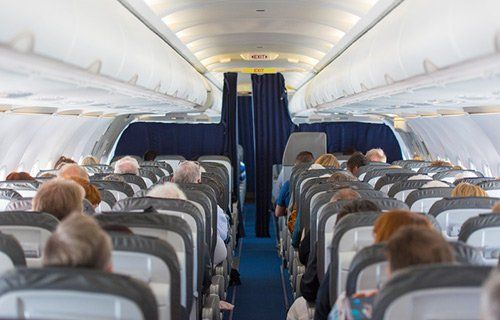Turbulence And In-Flight Injuries: Who Is Responsible?
Turbulence is a danger that affects multiple airline passengers every year. However, people tend to overlook this situation until they are directly affected.
The task of treating and moving past an injury is a struggle enough for any victim, but for individuals injured due to in-flight turbulence, there are often several questions about liability, in terms of who is responsible for the injury. Every case is different, but there are specific factors that may help put things in perspective.
Duty to Inform
Aviation technology has equipped pilots with the ability to predict patches of dangerous or unstable weather along their route. A pilot is not necessarily tasked with the responsibility of avoiding these hazardous zones, as this is not always possible.
Pilots are tasked with the duty of informing passengers of these weather patches so that they can take the necessary safety precautions.
When the pilot or flight crew fails to notify passengers, and an individual is tossed around while walking to the bathroom, any injuries sustained are not solely the result of the turbulence, but the result of the crew's negligence in informing the passengers of potential dangers.
Act of Nature
If you're a frequent air traveler, you are quite familiar with airline policies surrounding acts of nature. Massive storms like blizzards, rainstorms, and other weather hazards fall into this category.
In the same manner that an airline can avoid paying incidental costs to a passenger stranded due to an act of nature, airlines may also use this as a defensive tool to avoid responsibility for a turbulence caused inflight injury.
Unfortunately, when a pilot recognizes the threat and takes the appropriate steps to alert passengers, the airline may not legally be responsible for any injuries sustained by passengers since the event was an act of nature.
Equipment Failure
A turbulence injury related to a failed piece of equipment while in-flight is often complicated to tackle, in terms of assigning liability. Take an overhead bin door that unlocks and sends all the luggage toppling on top of a seated passenger, for instance.
If the locking mechanism showed previous signs of malfunction that were ignored by the flight crew, and the jolt from the turbulence caused the lock to open, the airline could be liable. If the reason for the lock's failure was a design flaw, the manufacturer could be responsible, which could open the door to a liability claim, as well as the airline.
Injuries sustained from equipment should always be examined by an attorney to determine who is at fault, or if there are multiple parties to blame.
Passenger Compliance
The pilot and flight crew may play a large role in terms of ensuring safety while in the air, but passengers are not absolved of any responsibility in this area. If a passenger is not adhering to safety guidelines, it may be challenging to place blame on the airline for their in-flight injuries.
If the pilot has alerted the cabin of the upcoming weather and a passenger decides to ignore the requirement for passengers to remain in their seats, with their seatbelts on, this incident may be viewed as an incidence in which a passenger was not compliant.
The airline may successfully argue in this situation that had the passenger followed the safety protocol they would not have sustained any injuries.
If you or a loved one suffered an in-flight injury due to turbulence, you need to speak to an attorney. Don't let someone else tell you that you aren't due any compensation or that your injuries are of your own doing. Schedule a consultation
with Wegner & Associates so that we can examine your case and help you claim any compensation to which you may be entitled.

